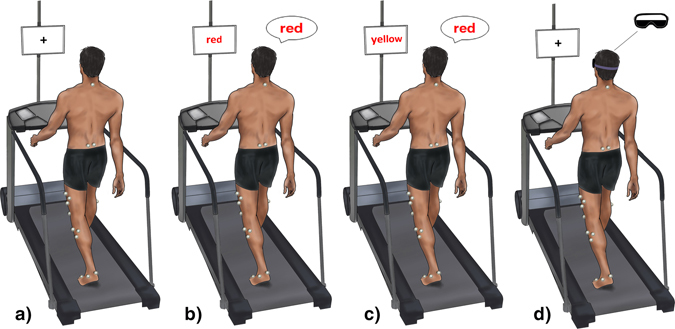Figure 1.

Experimental setup. Healthy adults aged 20–80 underwent 3D gait analysis while walking on an instrumented treadmill without handrail support. They undertook four locomotor tasks. Normal walking without a secondary task (a) was performed with the eyes fixed on a cross at eye height. Participants then walked while engaged in two Stroop colour-naming task (see methods) of differing difficulty. Image (b) shows the simpler task in which word and colour stimuli are congruent. In the more difficult, incongruent task (c) word and colour are discordant. Participants also carried out a visual restriction task in which they walked wearing eye goggles, the lower half of which were covered in black fabric to obscure the lower visual field. The upper edge of the fabric was affixed at the level of the subject’s interpupillary line. This figure was adapted from Fig. 1 in the publication Killeen et al. Increasing cognitive load attenuates right arm swing in healthy human walking. R. Soc. open sci. 2017 4 160993; DOI: 10.1098/rsos.160993. Published 25 January 2017 under the Creative Commons Attribution Licence 4.0.
